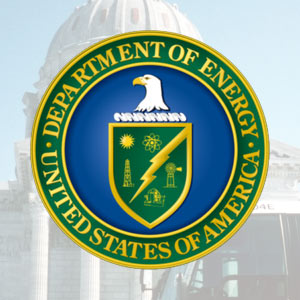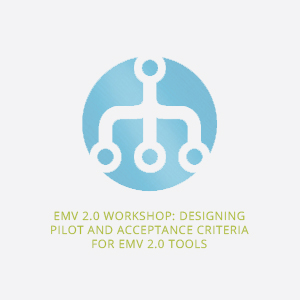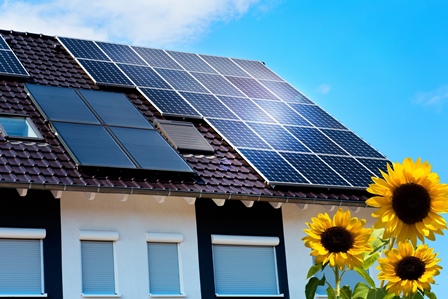 Grant Update
Grant Update
In August, CT DEEP and NEEP were pleased to learn that the US Department of Energy (DOE) plans to award a competitive State Energy Program grant to CT for a 3-year project called Standardized, Sustainable and Transparent EM&V – Integrating New Approaches. Eversource CT, United Illuminating, LBNL, and other EM&V Forum states (DE, DC, NH, NY, RI, VT) committed to participate or provide support. The overall goal of this project is to “explore and develop expertise and experience with advanced data collection and analytic tools and develop standardized automated M&V software tool protocols in order to support state efforts in the region to adopt and implement streamlined EM&V practices that provide for reliable, standardized, transparent and cost-effective approaches to quantify energy efficiency savings to support their state and regional policies and markets.” The tasks will include residential and commercial pilot projects and development of guidance on effective use of M&V software tools. As the award is still in the negotiation phase, watch for more details about the project in a future update.
For more information, please contact Elizabeth Titus.
 EM&V 2.0 Workshop in Review
EM&V 2.0 Workshop in Review
If you missed the EM&V 2.0 Workshop held in the fun and engaging Energize CT Center in North Haven, CT on September 22, don’t fret. Here is a short synopsis with links to the material that was discussed.
More than 60 industry experts and interested stakeholders came together to learn and discuss and ‘kick the tires’ on important aspects of designing pilots to test the use of automated EM&V tools. The workshop was planned in coordination with Lawrence Berkeley National Laboratory (LBNL). Jessica Granderson (LBNL) lead the audience through consideration of what questions a pilot should answer and what acceptance criteria are appropriate for results from analyses of whole facilities or of efficiency programs when using advanced analytics software (EM&V 2.0). Acronyms like ASHRAE and IPMVP were demystified. These discussions were interspersed with other presentations. EnergySavvy described highlights from recent residential pilots using their product in NY and Arizona. Energy & Resource Solutions provided an evaluator perspective on key considerations to keep in mind – such as bias - when analyzing results of pilots with a small numbers of facilities versus applying analyses to a population or to a statistical sample of program participants. Diane Duva, CT DEEP, provided facilitation support and a description of the value proposition of interest to Connecticut in exploring ways to obtain efficiency program impacts with more rapid feedback, and leveraging the AMI data that is available. Not only did the attendees stay awake and contribute constructively, but word on the street is that this workshop really succeeded in generating lively discussion and useful exchange between evaluators, program administrators, regulators, and software vendors. Presentation materials are available on the NEEP EM&V 2.0 Event webpage.
For more information, please contact Elizabeth Titus.
 EM&V for Integrated EE and Other DERs Webinar in Review
EM&V for Integrated EE and Other DERs Webinar in Review
On September 8, NEEP hosted a webinar on two topics of high interest for the next generation of EE: Demand response and geotargeting. These topics have commonalities in that strategies can vary widely, that cost-effectiveness can be challenging to measure or existing elements may not completely capture the benefits aligned with the policy goals that are being addressed, that these strategies are becoming increasingly important resources, and – something dear to the heart of the Forum – that the region would benefit from greater consistency and transparency in quantifying and reporting results.
NEEP’s research on efforts to integrate demand response and energy efficiency programs reviewed policy drivers, program strategies, benefit/cost results, and challenges and opportunities in programs throughout the Northeast. Program strategies include manual curtailment, direct load control, legacy direct load control, two-way direct load control, and behavior demand response. In order to determine the cost-effectiveness of these strategies, variables such as lifecycle, enrollment vs control, weather variability, and customer incentives, etc., should be evaluated. It illustrated the importance of DR to address forecasted continued growth in peak demand even as EE decreased overall load growth.
Dunsky Energy Consulting. In ISO-NE, investment in energy efficiency will decrease overall load growth, but peak demand will continue to grow, spreading MW costs over fewer MWhs. Therefore, forward looking program administrators are targeting system peaks on a temporal and locational basis through focus on peak coincident energy efficiency measures, demand response, and geo-targeting.
The presentation on advancing the Northeast’s Energy System with Geotargeting focused on research for National Grid by Dunsky Energy Consulting to develop a cost-effectiveness framework appropriate to local scale energy efficiency designed to defer or avoid transmission and distribution expansion. The presentation uses the Nantucket case as a looking glass into the benefits from geotargeted demand side management, stressing the value of spatial (local) avoided costs, as well as assessing what benefits to consider and the level of difficulty in quantifying various types of benefits. In the case of Nantucket, the key constraint is the underwater cable bringing power to the island. They have 2 cables, which last 50 years, and will most likely need a third by 2028. One of the most innovative features of the study was the introduction of option value as a type of benefit that has not commonly been included in energy efficiency cost-effectiveness frameworks. While the relevance of option value1 is not restricted to geotargeted projects, it is an important aspect of the value proposition of a resource such as energy efficiency when compared to construction of infrastructure to meet capacity needs.
For more information on the webinar you can view the PowerPoint slides and the accompanying Q&A document.
RECENTLY COMPLETED FORUM PROJECTS
- Gross and Net Savings Principles and Guidance: (all states). The Forum is pleased to present the following guidance documents available on the NEEP website. For more information, please contact Elizabeth Titus.
- Gross and Net Savings Principles and Guidance: Attention regulators, use this to inform your net and gross savings policy discussions. This document provides six core principles to inform states’ decisions regarding their applications of gross and net savings based on policy goals, and a Gross and Net Savings Decision Making Framework and Template (available as a standalone resource) for making and documenting these discussions and decisions.
- Supplemental Document #1 - Current and Evolving Policies, Issues and Methods Pertaining to Gross and Net Savings: As the name suggest, this provides timely context for the principles.
- Supplemental Document #2 - Decision-Framework for Determining Net Savings: This is an innovative, visual high-level summary of the methods and approaches used to estimate net savings using material largely from DOE Uniform Methods Project chapter on Net Savings (DOE UMP, 2014). Use this as a quick and easy source on methods.
- Scoping Study on Evaluator Certification: The final report of the Scoping Study on Evaluator Certification and Roadmap to Certification, were completed and delivered to the Department of Energy (DOE). The DOE is now planning phase two to be facilitated by the Lawrence Berkeley National Lab. For more information, contact Elizabeth Titus, etitus@neep.org.
- Incremental Cost (Emerging Technologies): (NY, MA, CT, NH and RI). Get the latest and greatest cost information and market descriptions here - no engineering degree needed. This study by Energy & Resource Solutions Inc. describes market conditions, costs and incremental costs of 10 emerging energy efficient technologies: variable capacity heat pumps – AC; advanced LED lighting controls; home energy “smart” products; high efficiency rooftop packaged AC; integrated heat pump thermostats; advanced compressors for commercial refrigeration; compressed air diagnostics; advanced heat pump water heaters; Q-sync motors for evaporator fans.
- Loadshape Data Catalog: (MA, CT, NH, RI, VT). Use this to find out where the region's gaps in loadshape data are by using the Loadshape Catalog and brief report, prepared for the Regional EM&V Forum by DNVGL. The catalog has summary information from recent metering-based studies, provided by states. It was developed to help reduce evaluation costs by making results from interval data more available, among other benefits. The catalog is a user-friendly spreadsheet compilation of any key energy and peak demand savings parameters (e.g. hours of use and coincidence factors). The report recommends future research, based on critical review of data gaps as well as research to address implications from new (‘big data’-related) industry developments.
- Mid-Atlantic TRM V.6: (MD, DE, DC). Exciting news for Forum members: this TRM was ranked among the top 5 in the country according to a recent California study. The Forum is pleased to remind members that the latest update of this TRM was delivered in May 2016 and is available on the NEEP website. We are pleased to note that the mid-Atlantic TRM has very positive and widespread recognition. It was among the top five shining examples of quality TRMS, per a recent California study presented at the ACEEE summer study. Also, stakeholders may be interested to know that much of the content of the Forum’s TRM is being used – and properly attributed – by the Old Dominion Electric Cooperative in Virginia:
 2016 FORUM PROJECT UPDATES
2016 FORUM PROJECT UPDATES
- EM&V Methods – Helping to Support National Energy Efficiency Registry (NEER) Development Process: NEEP participates in the subgroup on QA/QC and contributed to in an in-person meeting convened on September 15 by NEER to help inform their efforts to establish a national source of EE data that could support compliance with existing and future state and federal environmental regulations. The Forum’s EM&V methods forms and experience with program and project reporting are helpful input into this process. Here is a link to the Forum’s June 30 EM&V Methods webinar which provides useful background on the NEER effort: National Energy Efficiency Registry (NEER)
- EM&V 2.0/Automated EM&V: NEEP is involved in various strategies to advance knowledge of and EM&V applications of Automated EM&V tools. Ongoing activities include: a Home Energy Management Systems (HEMS) initiative guided by Claire Miziolek of NEEP; and scoping of research on tools to support Automated EM&V for the C&I sector. NEEP staff are participating on the Steering Committee and Working Groups for the ACEEE Intelligent Efficiency Labeling and CPP Initiative.
- NEEP delivered a webinar to share information on EM&V 2.0 concepts, ongoing research by LBNL, and experience with residential pilots, including a report from PSEG-LI and from EnergySavvy on its Software as a Service Tool applications. Here is a link to the June 23 EM&V 2.0 webinar.
- A workshop on Designing Pilots and Acceptance Criteria for EM&V 2.0 Tools and Data will be held September 22 in North Haven, CT.
- Currently, NEEP is also conducting background research on Saas tools, case studies, and information available or needed by the EE stakeholder community that would enable “EM&V 2.0” concepts and resources to be increasingly integrated into the delivery, including evaluation, of EE in the region.
- EM&V for Integrated EE and Other DERs: NEEP will continue to track and share developments pertaining to this area with EM&V Forum members, and will be exploring opportunities possible future research.
- EM&V for New Technology and Program Models:
- Save the Date - NEEP is planning a workshop on Industrial Strategic Energy management in MA for November 15. A briefing paper on EM&V Issues and Experience with SEM is under development and will be forthcoming after the workshop.
- HEMS Workshop September 21 - On September 21, NEEP hosted the 2016 Home Energy Management Systems (HEMS) Workshop at the EnergizeCT Center in North Haven, CT. The day was spent discussing the HEMS landscape and diving deeply into NEEP’s proposed strategies for success from the forthcoming regional market transformation strategy report. Focusing on the major energy using systems in a home, NEEP presented strategies for smart water heating, smart HVAC through smart thermostats, and smart plug load systems. After a brief discussion of how HEMS intersects with low-income households and program, the workshop moved on to talk through demand response and distributed energy resource opportunities. We then talked through some HEMS pilot efforts focused beyond the smart thermostat, and discussed future role for utilities in the HEMS space. All slides and more information can be found here.
- In its continuing role as Steering Committee member for the US DOE UMP, the Forum provided comments on the preliminary draft of the Industrial Strategic Energy Management (SEM) Protocol in September, with input from Forum technical advisor Dave Jacobson. This protocol is now available for public comment. To participate in the review, visit the Uniform Methods Project protocols review, register, and view a brief video that explains how to make comments on any section of the document using a simple online form. Please submit your comments by October 21, 2016.
- State EE Data Analysis & Trends:
- Data collection for program year 2015 is well underway with the majority of states having returned the completed data request and the quality assurance/quality control complete. The remaining outstanding data and posting of data to REED website is expected by the end of the month.
- If you haven’t heard of REED Renderings by now, go check out the bi-monthly blog featuring REED data trends, and when applicable, current event discussion. The most current issue discusses the PJM Interconnection Capacity Auction results and the implications it has for energy efficiency.
[1] For those who are wondering, here is an accessible description of the concept of Option value from a noted economist, Robert Pindyck: “But, thanks to Joni Mitchell, even noneconomists know that if we ‘‘pave paradise and put up a parking lot,’’ paradise may be gone forever. And if the value of paradise to future generations is uncertain, the benefit from protecting it today should include an ‘‘option value,’’ which pushes the cost-benefit calculation towards protection. Thus, it might make sense to restrict commercial development in a wilderness area, even if today very few people care at all about that wilderness or have any desire to visit it. After all, if it becomes clear over the next few decades that very few people will ever care much about that wilderness, we will still have the option to pave it over. But if we exercise the option of paving over the wilderness today, we will lose the flexibility that the option gave us.” (http://web.mit.edu/rpindyck/www/Papers/UncertEnvironEconPrinted_version.pdf)
